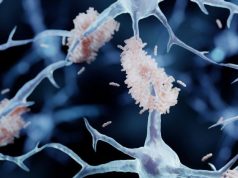Non-Hispanic American Indian and/or Alaska Native and Hispanic decedents have to travel further to neurologist than non-Hispanic Whites
By Elana Gotkine HealthDay Reporter
FRIDAY, April 5, 2024 (HealthDay News) — Distance to a neurologist and primary care physician may explain some of the disparities in Alzheimer disease and related dementia (AD/ADRD) outcomes, according to a study published online March 20 in Alzheimer’s & Dementia.
Solmaz Amiri, Ph.D., from the Elson S. Floyd College of Medicine at Washington State University in Seattle, and colleagues generated round-trip distance between residences of decedents with AD/ADRD and the nearest neurologist and primary care physician in Washington state to examine whether distance to physicians explains some of the disparities in outcomes.
The researchers found that the overall mean distance was 17 and 4 miles to the nearest neurologist and primary care physician, respectively. Compared with non-Hispanic Whites, non-Hispanic American Indian and/or Alaska Native and Hispanic decedents would have had to travel 1.12 and 1.07 times farther, respectively, to reach the nearest neurologist. Compared with those in metropolitan areas, decedents in micropolitan, small town, and rural areas would have had to travel 2.12 to 4.01 times farther to reach the nearest neurologist and 1.14 to 3.32 times farther to reach the nearest primary care physician.
“Implementation of targeted interventions can help address barriers to health care access for AD/ADRD patients,” the authors write. “Solutions may include addressing transportation barriers for patients, strategic planning for placement of future physician practices, providing mobile health care in underserved areas, increasing the dementia specialist physician workforce, developing dementia-related professional curricula for PCPs, and building awareness and education around AD/ADRD for the general population.”
Copyright © 2024 HealthDay. All rights reserved.








